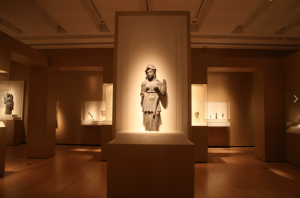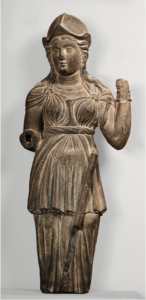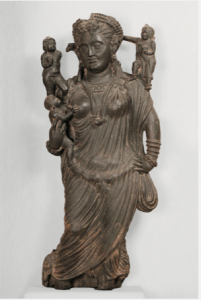
Beginning with Classical Composition, the visitor is treated to Gandharan art placed parallel to select works (from the MET, the Asia Society’s own collection, and private donors) originating in India and Rome to “highlight the stylistic and iconographic links and distinctions between these cultures.”1In this manner, the presentation puts direct emphasis on “the region’s location on the silk road, where traders from many parts of the world congregated, bringing with them not only goods, but also religion, philosophy, and art” and invites the active viewer not only to acknowledge these influences, but to directly explore them within the work.2This exploration is directly aided by the museum’s use of the most recent academia, which suggests that the art style and subject matters of Gandhara were influenced not only by Indo-Greeks and Indian culture, but Romans and the Parthians.1

The tone set by this first section may perhaps be most accurately judged by the opening artifact: So-Called Athena. Made in the second century CE, the schist statue has most often been identified as a representation of Athena due to her iconography, specifically her helmet, yet the very nature of her tittle presents doubt.3It has been concluded that she most likely would “represent some regional genius loci [protective spirit],” but by keeping her name, in placing her beside and among figures of Buddhist, Hindu, and Greco subject matter alike, the Asia Society invites visitors to more closely examine the figure and draw their own conclusions.4To create a specific comparison, for example, The Goddess Hariti with Three Children is placed in close proximity. This figure, which has been also called Athena in the past, bears clear resemblance to So-Called Athena.Her identification as the Buddhist deity Hariti, however, casts this assumption into doubt. In comparing the two, the influences of colliding cultures may be compared, contrasted, and used to weigh identity.


- “The Buddhist Heritage of Pakistan: Art of Gandhara.” Asia Society.
- Berman, Greta. “Gandharan Art – The Great Synthesis.” The Julliard Journal.
- Ed. Proser, Adriana. The Buddhist Heritage of Pakistan: Art of Gandhara.
- Cotter, Holland. “When East Met West Under the Buddha’s Gaze.” The New York Times.